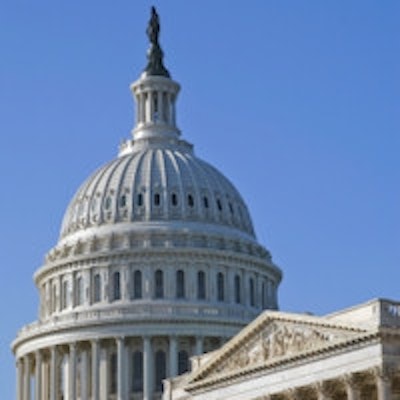
The U.S. Senate on April 14 passed legislation that permanently repeals Medicare's sustainable growth rate (SGR) formula in a final vote of 92 to 8, just hours before a 21% cut in physician payments under the Medicare Physician Fee Schedule would have been implemented.
The Senate's action follows the March 26 approval in the House of Representatives of the legislation, called the Medicare Access and CHIP Reauthorization Act of 2015 (HR 2). Since there were no amendments, the bill goes directly to President Barack Obama for signing; Obama has indicated he will sign the legislation.
"We're delighted -- but there's lots of work ahead to do," said Cynthia Moran, executive vice president for government relations at the American College of Radiology (ACR).
HR 2 will eliminate the threat of annual cuts to Medicare providers and secure a five-year period of stable annual payment increases of 0.5% as Medicare transitions from a volume-based payment system to one that rewards value.
Although, technically, the cut in physician payments went into effect on April 1, the U.S. Centers for Medicare and Medicaid Services (CMS) said it would hold electronic claims for the first 14 calendar days of April and paper claims for 29 days after the date of receipt. With less than three hours to spare, the Senate passed the bill at 9:33 p.m. Eastern time on April 14.
Senate Finance Committee Ranking Member Ron Wyden (D-OR) lauded the bill's passage.
"By its actions today, the Senate -- in one fell swoop -- abolished Medicare's broken sustainable growth rate payment formula and replaced it with a better and permanent system for paying physicians and providers," he said. "This is a momentous day and, fittingly, it comes as we celebrate Medicare's 50th anniversary this year."
Professional societies such as the American College of Physicians (ACP) and the American Society of Clinical Oncology (ASCO) praised the Senate as well.
"ACP applauds the efforts of so many in Congress who worked in a bipartisan fashion, over many years, to develop this legislation," ACP President Dr. David Fleming said. "Physicians and their patients no longer will have to be concerned with impending yearly payment cuts as a result of the flawed SGR formula."
How much will it really cost?
The Congressional Budget Office (CBO) has estimated that enacting HR 2 will result in a $141 billion increase in federal budget deficits over a 10-year period. But on April 9, Medicare Chief Actuary Paul Spitalnic released a report that estimates the bill will increase combined federal spending for Medicare, Medicaid, and the health insurance marketplace by $102.8 billion.
Whatever the price tag, will the legislation prove effective? Not necessarily, according to Spitalnic.
"While HR 2 avoids the significant short-range physician payment issues resulting from the current SGR system approach, it nevertheless raises important long-range concerns that would almost certainly need to be addressed by future legislation," he wrote. "Additional updates totaling $500 million per year and a 5% annual bonus are scheduled to expire in 2025, resulting in a payment reduction for most physicians."
However, House Energy & Commerce Committee Chairman Fred Upton (R-MI) took a more positive view of the CMS report, emphasizing that the bill not only is "more honest budgeting," but that it also provides needed stability for physician reimbursements, encourages physicians to move toward value-based rather than volume-based care, and extends the solvency of the Medicare program.
"Stick a fork in it, it's finally done," Upton said in a statement after the Senate passed the bill.
More work to come
HR 2 brings stability to the conversion factor, at least for the next 10 years, which is a welcome change from the annual drama of SGR updates that were often paid for by cuts to the technical component of diagnostic imaging exams, Moran said. But as far as ACR is concerned, this good news will be tempered by ongoing effort.
"This bill's intent is to move physicians into alternative payment models that, as of yet, are still more theoretical than in practical use today," she said. "CMS has a lot of latitude as to how it will implement the details of the bill -- and an aggressive time frame. We plan to be extremely diligent as they do that."



















